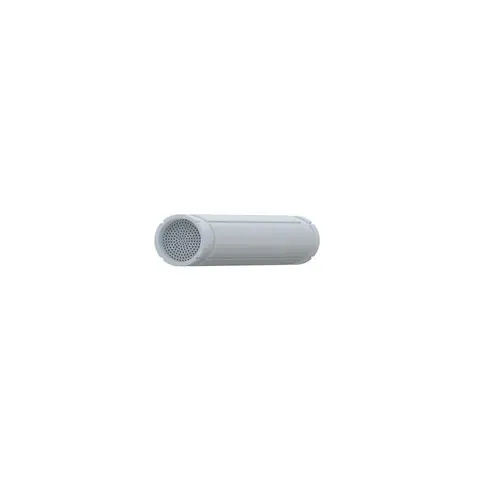NeuroSpan Bridge: How This Implant Heals Nerve Damage
🧠 You’re Not Doomed to Live With Nerve Pain
If you or a loved one is suffering from numbness, nerve pain, or sluggish healing after surgery, you’re not alone—and you’re not stuck. The NeuroSpan Bridge is more than a medical gadget; it’s a regenerative revolution, designed especially for older adults dealing with nerve damage from diabetes, injury, or age-related wear and tear.
In this post, we’ll show you exactly how it works, why it’s a huge leap forward, and how it can help you or someone you care about regain comfort, movement, and confidence.
📖There's More to This Than Meets the Eye
The NeuroSpan Bridge is a 3D-printed, bioresorbable nerve implant that mimics the natural structure of peripheral nerve tissue. It is surgically implanted to bridge gaps in damaged nerves, guiding axons to grow in a straight, functional path. Over time, the implant dissolves naturally, leaving behind healthy, regenerated nerve connections. This approach reduces the risk of painful neuroma formation and improves functional recovery, especially beneficial in aging adults whose healing capacities are reduced.

🧬 What Is the NeuroSpan Bridge, Exactly?
The NeuroSpan Bridge is a next-gen nerve repair implant. But we’re not talking about your granddad’s metal pins or stiff plastic tubes. This thing is 3D-printed with biodegradable polymers designed to mimic the actual microarchitecture of human nerve tissue.
It works like this:
- After a peripheral nerve is damaged—by surgery, injury, or disease—a gap often forms.
- Instead of suturing ends together and praying for the best (hello, painful neuromas 😩), surgeons insert the NeuroSpan Bridge to literally “bridge” the gap.
- The scaffold guides axons (the long arms of nerve cells) to regrow in a straight, organized fashion.
- Over time, the bridge naturally dissolves—leaving behind a fully restored nerve.
This innovation targets a critical issue in older populations: nerve damage that doesn’t heal well due to age-related decline in regenerative ability.
And yes, it’s already being trialed in humans.
When peripheral nerves are injured—by trauma, diabetes, or surgery—the gap between the severed ends often doesn’t heal well on its own. In seniors, this problem is even more pronounced due to slower cell regeneration and poor circulation. That’s where the NeuroSpan Bridge shines.
🧠 The Science Behind It
The NeuroSpan Bridge is engineered using 3D-printed, bioresorbable polymers that replicate the microscopic structure of real nerve tissue. It features a soft, flexible design that encourages nerve fibers (called axons) to grow in an orderly, linear path. This mimics natural healing but adds a controlled architectural scaffold—something the body just can’t do on its own.
- Axonal Guidance: The implant creates a tunnel that directs axons from the proximal (near) stump of the nerve toward the distal (far) target, ensuring they connect properly.
- Microarchitecture: Its inner channels are aligned to mirror the fascicular pathways of human nerves—kind of like organizing tangled wires into neat cable sleeves.
- Resorbable Material: No need for removal. The bridge safely dissolves over time, leaving only the newly regenerated nerve.
👴 Why This Matters for Older Adults
Older adults often deal with:
- Peripheral neuropathy from diabetes or chemotherapy
- Post-surgical nerve injuries from joint replacements
- Carpal tunnel and compression syndromes
- Higher risk of painful neuroma formation
Traditional treatments include nerve grafts, which can involve additional surgery and longer healing times—not ideal for someone over 70. The NeuroSpan Bridge, however, allows for a minimally invasive solution that integrates seamlessly during a single surgical procedure.
In clinical trials, the device has shown promise in reducing pain, improving functional outcomes, and enhancing mobility in elderly patients, according to 3Printr.com.
🧓 Why Is the NeuroSpan Bridge Ideal for Seniors?
Aging bodies heal differently. Seniors often experience decreased vascular flow, reduced stem cell activity, and delayed axonal regeneration. The NeuroSpan Bridge compensates for these factors by creating a physical and biochemical pathway for nerves to regrow—without the need for donor grafts or repeated procedures.
This is especially helpful for:
- Diabetics with foot neuropathy
- Elderly patients recovering from orthopedic surgery
- Seniors with carpal tunnel release surgery
Bonus: It restores function and feeling, not just appearance. This can mean the difference between independent living and needing constant care.
🛠️ How Is the NeuroSpan Bridge Implanted?
The implant is placed during surgery under the care of a neurosurgeon or orthopedic specialist. Here's how it works:
- Surgical access is made to the damaged nerve.
- The nerve ends are aligned, and the NeuroSpan Bridge is positioned between them.
- Sutures or adhesives may secure the bridge.
- Healing begins immediately, guided by the bridge’s internal channels.
The implant gradually resorbs within weeks to months, depending on the individual’s biology.
🤕 Can the NeuroSpan Bridge Prevent Chronic Pain?
Yes—and that’s a big deal. One of the biggest fears after nerve injury or surgery is neuroma: a tangled ball of misdirected nerve fibers that causes shooting pain. The NeuroSpan Bridge’s structured design keeps nerve fibers growing straight, dramatically reducing the likelihood of neuroma formation.
This has significant implications for:
- Amputees
- Post-surgical patients
- Diabetics with high-risk feet
Less pain = more mobility, better sleep, and brighter moods.
🔬 What’s Next for NeuroSpan and Nerve Repair?
The bridge is just the beginning. Researchers are exploring how to enhance it further with:
- Embedded drug delivery systems (e.g., anti-inflammatory agents or growth factors)
- Real-time regenerative monitoring
- Combinations with stem cell therapies
The ultimate goal? A completely personalized, bioactive nerve repair solution tailored to each patient’s unique anatomy and healing profile. For seniors, this could be the holy grail of long-term recovery.



